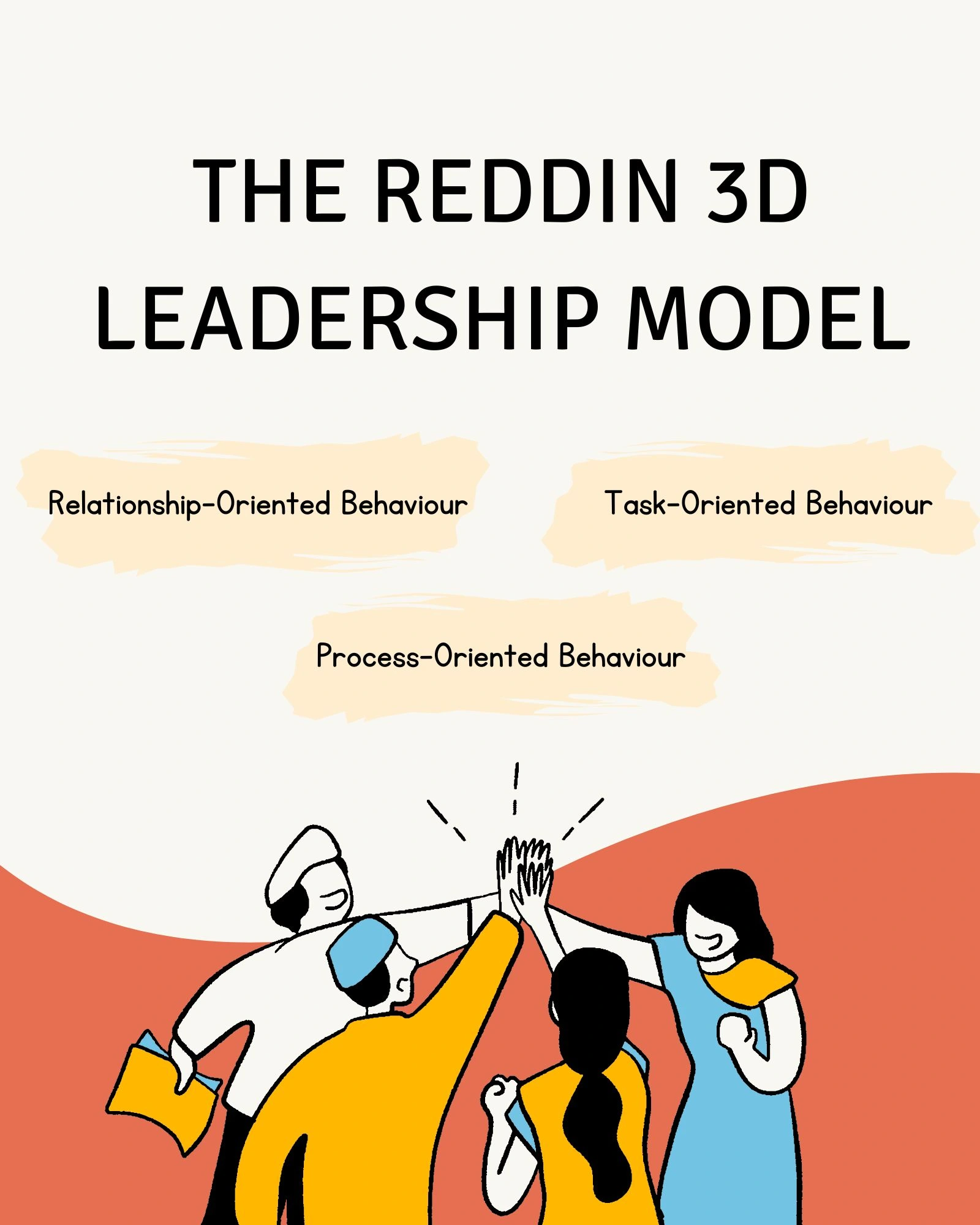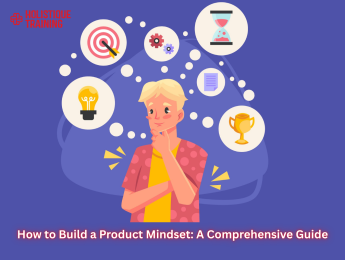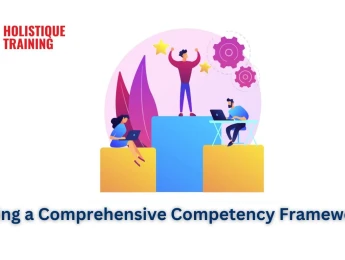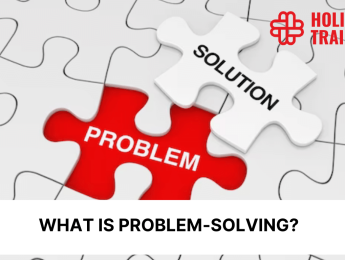- Table of Contents
- Introduction
- Who Is Bill Reddin?
- The Reddin 3D Leadership Model
- Task-Oriented Behaviour
- Relationship-Oriented Behaviour
- Process-Oriented Behaviour
- Why Is the Reddin 3D Model Important for Leaders?
- Self-Awareness and Growth
- Versatility and Adaptability
- Team Cohesion and Performance
- Organisational Success
- Identifying Your Dominant Leadership Style
- 1- Self-Reflection
- 2- Seek Feedback
- 3- Assess Your Priorities
- 4- Use Assessment Tools
- Exploring the Dimensions of Leadership
- Leadership in the Digital Age
- Gender and Leadership Styles
- Leadership in Crisis Management
- Conclusion
Introduction
Leadership is a multifaceted art that transcends the boundaries of traditional approaches. As organisations continue to evolve, so must our leadership styles. One revolutionary framework that has garnered widespread recognition is the Reddin 3D Leadership Model. Developed by the eminent psychologist Bill Reddin, this model presents a profound understanding of leadership patterns, enabling leaders to unlock their full potential and drive unprecedented success. In this comprehensive guide, we will delve into the essence of 3-Dimensional Leadership, explore Bill Reddin's background, the core concepts of the model, its importance for leaders, and finally, how you can identify and enhance your unique leadership style.
Who Is Bill Reddin?
Bill Reddin was a visionary psychologist and management theorist who significantly contributed to studying organisational behaviour and leadership. Born in England in the mid-20th century, Reddin's passion for understanding human behaviour led him to pursue a PhD in psychology. Over the years, he honed his expertise in the field of management and organisational psychology. Throughout his illustrious career, he worked closely with various corporations, government agencies, and educational institutions, leaving an indelible mark on the world of leadership.
The Reddin 3D Leadership Model
The Reddin 3D Leadership Model is a groundbreaking approach that allows leaders to comprehend their leadership styles across three crucial dimensions: Task-Oriented, Relationship-Oriented, and Process-Oriented behaviours. Each dimension represents a unique facet of leadership, and the combination of these dimensions defines a leader's overall approach to managing teams and achieving organisational objectives.

Task-Oriented Behaviour
Task-oriented behaviour is the cornerstone of a leader's ability to drive results and ensure the effective execution of tasks. Leaders who adopt this approach are like navigators, setting clear goals, charting a course, and steering the ship toward its destination with precision and determination. They thrive in environments where decisions must be made swiftly and objectives met efficiently. These leaders are adept at resource allocation, ensuring the right people and tools are in place to accomplish the mission. Moreover, they are unswerving in their commitment to meeting deadlines and upholding quality standards, often fostering a culture of accountability within their teams. In essence, task-oriented leaders excel at the art of getting things done. They ensure that projects are completed on time, budgets are adhered to, and the organisation stays on track to achieve its strategic goals.
Relationship-Oriented Behaviour
Relationship-oriented behaviour is the heart of leadership, which values people above all else. Leaders who excel in this dimension are like masterful conductors of a symphony, creating harmonious interactions and meaningful connections among team members. These leaders possess exceptional interpersonal skills and a deep sense of empathy. They actively listen to their team members, understand their concerns, and genuinely care about their well-being. This behaviour fosters an inclusive and supportive work environment where trust flourishes and collaboration becomes second nature. Relationship-oriented leaders are not just communicators; they cultivate team dynamics. They build bridges of understanding and camaraderie, ensuring team members feel valued and motivated to contribute their best. Their ability to inspire loyalty and commitment is a testament to the power of strong relationships in achieving collective goals.
Process-Oriented Behaviour
Process-oriented behaviour represents the analytical and systematic side of leadership. Leaders who emphasise this dimension are akin to architects, continuously refining and optimising the systems and workflows that underpin the organisation's operations.
A relentless pursuit of efficiency and effectiveness drives these leaders. They analyse data meticulously to identify bottlenecks and areas for improvement. Their keen eye for detail allows them to spot inefficiencies in processes and take strategic actions to eliminate them.
Process-oriented leaders champion continuous improvement. They encourage their teams to think critically about how work is done, promoting a culture of innovation and adaptation. They see processes as the organisation's lifeblood, and their commitment to streamlining operations often leads to enhanced productivity, reduced costs, and a competitive edge in the marketplace. In summary, process-oriented leaders are the architects of operational excellence. They work behind the scenes to ensure the organisation functions like a well-oiled machine. They understand that small process improvements can lead to significant gains in overall performance.
By recognising and appreciating the nuances of these three dimensions—task-oriented, relationship-oriented, and process-oriented—leaders can unlock their full potential and develop a well-rounded approach to agile and effective leadership. The Reddin 3D Leadership Model empowers leaders to harness the strengths of each dimension and navigate the complexities of the modern business landscape with confidence and competence.
Leadership Dimension | Description |
Task-Oriented Behaviour | Focus on setting clear goals, efficient resource organisation, and rigorous monitoring of task completion. |
Relationship-Oriented Behaviour | Nurturing meaningful connections, demonstrating empathy, and fostering a supportive team environment. |
Process-Oriented Behaviour | Emphasis on optimising systems and workflows, analysing data, and driving continuous improvement. |
Table 1: Leadership dimensions
Why Is the Reddin 3D Model Important for Leaders?
The Reddin 3D Leadership Model holds immense significance for leaders in today's dynamic business landscape. By understanding their dominant leadership dimension and the interplay between the three dimensions, leaders can effectively harness their strengths and address their weaknesses. Here are some key reasons why this model is invaluable for leaders:
Self-Awareness and Growth
Self-awareness is the cornerstone of effective leadership. By recognising their primary leadership dimension, leaders gain valuable insights into their natural tendencies and inclinations. This self-awareness serves as a powerful platform for personal growth and development.
Leaders who understand their dominant dimension can embark on a journey of self-improvement with a clear roadmap. They can focus on honing their strengths, whether in task orientation, relationship building, or process optimisation. Additionally, self-awareness allows leaders to identify areas where they may need support or skill development, enabling them to become more well-rounded and adaptable leaders over time.
Versatility and Adaptability
In today's rapidly changing business landscape, leadership demands versatility and adaptability. The Reddin 3D Leadership Model equips leaders with the tools to adapt their leadership style to suit diverse situations and challenges.
For instance, a predominantly task-oriented leader may learn to emphasise relationship-oriented behaviour when dealing with team morale or conflict resolution. By recognising the need to balance their approach, leaders can build stronger, more collaborative teams and effectively navigate complex interpersonal dynamics. This adaptability ensures that leaders remain effective and relevant in a world where flexibility and agility are paramount.
Team Cohesion and Performance
Effective leadership is about achieving individual success and fostering a cohesive team that consistently delivers outstanding results. Leaders who strike a balance between these three dimensions can create an optimal work environment that motivates and empowers team members to reach their full potential.
When leaders prioritise relationship-oriented behaviour, they build trust and camaraderie within their teams. This, in turn, leads to improved team morale, enhanced collaboration, and higher levels of engagement. As a result, team members are more likely to go the extra mile and contribute positively to the organisation's overall performance.
Organisational Success
A well-rounded leadership approach incorporating all three dimensions can improve organisational success. Leaders who focus on tasks, relationships, and processes concurrently are better equipped to navigate complexities and drive long-term growth.
Task-oriented leaders drive results and ensure that strategic objectives are met. Relationship-oriented leaders foster a positive workplace culture that attracts and retains top talent. Process-oriented leaders optimise operational efficiency, reducing costs and enhancing the organisation's competitive advantage.
When these dimensions come together in harmony, organisations benefit from leaders who can confidently navigate the ever-evolving business landscape. These leaders are not only focused on short-term gains but also on building a strong foundation for sustainable success.
In short, the Reddin 3D Leadership Model is not just a theoretical framework; it is a practical guide that empowers leaders to reach their full potential, adapt to change, inspire their teams, and drive organisational success. By embracing the unique interplay of task-oriented, relationship-oriented, and process-oriented behaviours, leaders can lead with authenticity, resilience, and effectiveness, ensuring a bright future for themselves and their organisations.
Identifying Your Dominant Leadership Style
Discovering your primary leadership style is vital in leveraging the Reddin 3D Leadership Model to enhance your leadership abilities. Follow these steps to identify your dominant leadership dimension:
1- Self-Reflection
Self-reflection is a profound exercise that allows you to gain clarity on your typical leadership behaviours and interactions with your team. Dig deep into your experiences and consider instances where you found yourself naturally gravitating towards task-oriented, relationship-oriented, or process-oriented behaviours. Think about your approach to problem-solving, decision-making, and team dynamics. Did you feel most comfortable when setting clear goals and driving results? Or did you often find yourself connecting with team members on a personal level and fostering a sense of camaraderie? Alternatively, were you drawn to optimising workflows and eliminating inefficiencies? By examining these scenarios, you can start to identify your dominant leadership dimension.
2- Seek Feedback
While self-reflection is valuable, obtaining feedback from others provides an external perspective that can be eye-opening. Request feedback from your team members, peers, or superiors. Their observations and perspectives can offer valuable insights into your leadership style and its impact on the team. Ask them to provide examples of your leadership behaviours that stood out to them. Were there moments when they felt you were exceptionally results-driven, empathetic, or focused on process improvement? Gathering this feedback can help you corroborate your self-assessment and provide a more comprehensive view of your leadership style.
3- Assess Your Priorities
Leadership often involves making critical decisions and setting priorities. Analyse your priorities and decision-making processes in various situations. Do you primarily focus on setting clear goals and driving results, building strong relationships and fostering a supportive team, or streamlining workflows and processes? Consider the situations where you felt most in your element as a leader. Were you drawn to the strategic planning sessions that involved goal setting and performance metrics? Or did you excel when resolving conflicts and nurturing team cohesion? Alternatively, did you thrive when redesigning processes to enhance efficiency and effectiveness? Recognising your dominant priorities in different contexts can shed light on your leadership style.
4- Use Assessment Tools
Various leadership assessment tools, such as surveys or questionnaires, can clarify your dominant leadership style. These tools offer data-driven insights into your behaviour patterns and preferences. They often present scenarios and questions that require you to evaluate how you would respond as a leader. Participating in such assessments can provide you with quantifiable results that highlight your leadership tendencies. They may also reveal areas where your leadership style aligns with the Reddin 3D Leadership Model's dimensions and where there may be room for improvement or adaptation. Combining the insights gained from self-reflection, feedback from others, an assessment of your priorities, and the results of assessment tools, you can confidently identify your dominant leadership style. This self-awareness is a crucial foundation for applying the Reddin 3D Leadership Model effectively and embarking on a journey of growth and development as a leader.
Exploring the Dimensions of Leadership
The dimensions of leadership in the Reddin 3D Leadership Model extend beyond their basic definitions. Each dimension offers a unique perspective on how leaders can adapt and excel in various contexts. Let's delve deeper into these dimensions and explore their nuances:
Leadership in the Digital Age
Leadership has taken on new dimensions and challenges in today's digital age. Technology has become an integral part of the workplace, and leaders must adapt their styles to navigate this digital landscape effectively.
- Task-Oriented Leaders: In the digital realm, task-oriented leaders excel at usingproject management software,data analytics tools, and virtual collaboration platforms. They ensure that digital projects are on track, deadlines are met, and objectives are achieved efficiently. Their ability to manage digital resources and meet goals is invaluable in remote work settings.
- Relationship-Oriented Leaders:Building relationships in a digital world requires a different approach. Relationship-oriented leaders focus on creating strong virtual connections, fostering a sense of belonging among remote team members, and using technology to facilitate open and empathetic communication. They understand that digital relationships can be just as meaningful as face-to-face ones.
- Process-Oriented Leaders:Process optimisation is crucial in the digital age. Process-oriented leaders leverage digital tools to streamline workflows, automate repetitive tasks, and drive efficiency in virtual work environments. They understand that digital processes are not static and continuously seek ways to optimise them, ensuring that the organisation remains agile and competitive.
Leadership Dimension | Description |
Task-Oriented Behaviour | Efficiently implements technology, meets tech goals promptly |
Relationship-Oriented Behaviour | Builds tech teams, fosters collaborations, supports tech growth |
Process-Oriented Behaviour | Optimise tech workflows, ensures tech efficiency, adapts tech process |
Table 2: How different leadership dimensions implement technology
Gender and Leadership Styles
Gender plays a role in shaping leadership styles, and it's important to recognise and challenge stereotypes related to leadership. While leadership styles should be assessed individually, studies have shown that women tend to exhibit more relationship-oriented behaviours, such as empathy and collaboration. Conversely, men may lean toward task- and process-oriented behaviours.
However, it's crucial to emphasise that effective leadership transcends gender stereotypes. The Reddin 3D Leadership Model encourages leaders to embrace a balanced approach that leverages the strengths of all three dimensions, regardless of gender, fostering more inclusive and successful leadership practices.
- Task-Oriented Leadership: Gender does not determine one's ability to excel in task-oriented leadership. Both men and women can effectively set clear goals, make decisive decisions, and ensure tasks are completed efficiently.
- Relationship-Oriented Leadership:Empathy and relationship-building are skills leaders of any gender can cultivate. Effective leaders, regardless of gender, prioritise building strong connections with their team members and fostering a supportive work environment.
- Process-Oriented Leadership:Process optimisation is not gender-specific. Leaders can excel in this dimension by focusing on continuous improvement and driving efficiencies in operational workflows, regardless of their gender.
Recognising the diversity of leadership styles and the impact of gender-related biases is essential for promoting equality and ensuring that all leaders have the opportunity to thrive.
Leadership in Crisis Management
Crisis management requires a unique set of leadership skills, and the Reddin 3D Leadership Model can be a valuable tool in these situations. Leaders must rapidly adapt their styles to address unforeseen challenges and uncertainties.
- Task-Oriented Leaders: During a crisis, task-oriented leaders excel at making quick decisions, setting priorities, and efficiently allocating resources to mitigate the crisis's impact. They provide clarity and direction in chaotic situations, ensuring that essential tasks are completed.
- Relationship-Oriented Leaders: Relationship-oriented leaders play a crucial role in crisis management by providing emotional support, maintaining team morale, and facilitating effective communication. Their ability to keep teams motivated and focused is vital for navigating crises.
- Process-Oriented Leaders:Process-oriented leaders can help organisations navigate crises by identifyingbottlenecks, suggesting process improvements, and ensuring that emergency response plans are executed smoothly. Their attention to detail can be invaluable during high-stress situations.
A combination of all three dimensions can be particularly effective in times of crisis. Leaders who can balance task-oriented decisiveness, relationship-oriented support, and process-oriented efficiency are well-equipped to guide their teams through challenging circumstances.
Conclusion
Leadership is a continuous growth journey, and the Reddin 3D Leadership Model offers a profound roadmap to self-discovery and transformation. By understanding the interplay between task-oriented, relationship-oriented, and process-oriented behaviours, leaders can fine-tune their approach to lead with authenticity and efficacy. Embrace the uniqueness of your leadership style and leverage it to drive organisational success, foster team cohesion, and inspire greatness within your team. Remember, the power of 3-dimensional leadership lies in its ability to empower you to be the best leader you can be. To unlock your full leadership potential, consider enrolling in our course, 'Perfecting Your Management and Leadership Skills.' This course offers expert guidance and personalised strategies to help you excel as a leader in all dimensions. Step forward confidently, and let your leadership shine in every facet, from tasks and relationships to processes and beyond. It's time to take your leadership to the next level.
























